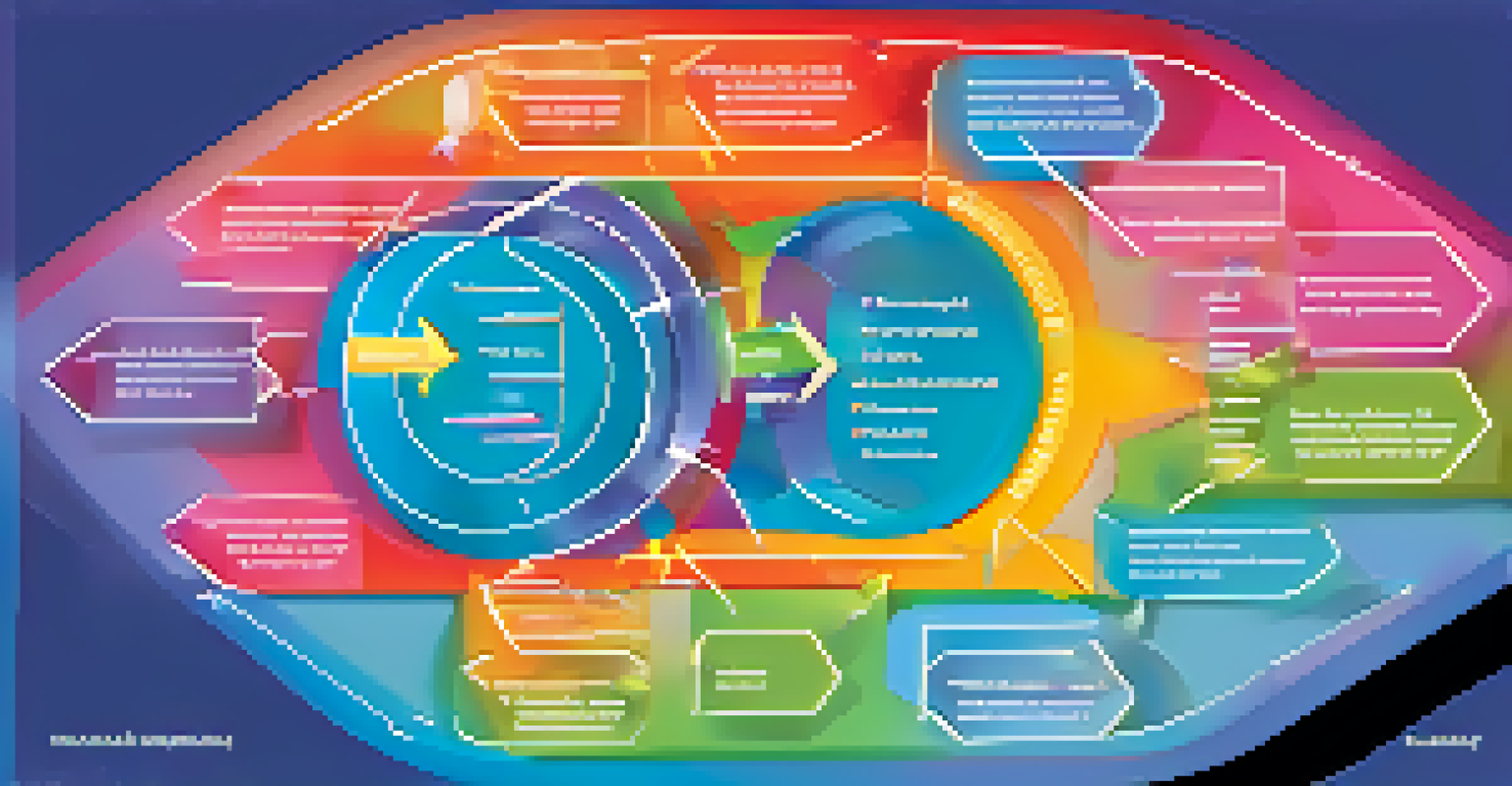Feedback Loops: Enhancing Engagement Through Communication

Understanding Feedback Loops in Communication
Feedback loops are essential mechanisms in communication that help us gauge the effectiveness of our interactions. At their core, they involve sending a message, receiving a response, and adjusting future messages based on that feedback. Think of it like a conversation where both parties learn and adapt, making the dialogue more meaningful and productive.
Feedback is the breakfast of champions.
In a business context, feedback loops can significantly enhance employee engagement, customer satisfaction, and overall productivity. By fostering an environment where input and responses are valued, organizations can cultivate a culture of continuous improvement. For example, when a manager seeks input on a project and acts on it, employees feel more invested in their work.
Moreover, feedback loops can transform one-way communication into a dynamic exchange. Instead of merely delivering information, parties can respond and recalibrate their messages, ensuring clarity and understanding. This approach not only improves relationships but also leads to better outcomes, whether in team settings or customer interactions.
The Role of Active Listening in Feedback Loops
Active listening is a crucial component of effective feedback loops. It goes beyond simply hearing what someone says; it involves fully engaging with their words, understanding their feelings, and responding appropriately. When participants practice active listening, they create an atmosphere where open communication thrives.

For instance, during team meetings, a leader who actively listens can pick up on concerns and suggestions that might otherwise go unnoticed. This not only encourages team members to share their thoughts but also builds trust within the group. When people feel heard, they are more likely to contribute openly in the future.
Feedback Loops Enhance Communication
Feedback loops facilitate dynamic exchanges that improve clarity and understanding in both personal and professional settings.
Ultimately, active listening not only enhances the quality of feedback received but also strengthens relationships. It shows respect for the speaker and their opinions, which can lead to richer dialogues and more effective collaborations. By nurturing this skill, organizations can create a more engaged and motivated workforce.
Creating a Culture of Feedback in the Workplace
Establishing a culture of feedback requires intentional efforts from leadership and team members alike. This means encouraging regular check-ins and creating safe spaces for honest discussions. When feedback is normalized, it becomes easier for everyone to share their thoughts without fear of repercussions.
The single biggest problem in communication is the illusion that it has taken place.
Consider implementing structured feedback sessions where team members can voice their opinions on projects or processes. These sessions can be supplemented with anonymous surveys to ensure that everyone has a voice, even those who might be hesitant to speak up. Over time, this practice fosters a sense of belonging and ownership among employees.
Moreover, celebrating feedback as a tool for growth reinforces its value within the organization. When leaders demonstrate that they appreciate and act on feedback, it inspires others to do the same. This cycle of giving and receiving feedback not only enhances engagement but also drives innovation as diverse perspectives come into play.
Utilizing Technology to Enhance Feedback Loops
In our digital age, technology offers various tools to streamline feedback loops. Platforms like Slack, Microsoft Teams, and dedicated feedback apps allow for real-time communication and quick responses. This means that feedback can be exchanged more fluidly, without the constraints of traditional meetings.
For instance, using project management tools can help teams track feedback on tasks and projects, making it easier to refer back to previous discussions. These tools often provide features for tagging and organizing feedback, allowing teams to prioritize and address concerns efficiently. This ensures that feedback isn’t just given but is also actionable.
Active Listening Builds Trust
Practicing active listening creates an environment of open communication, encouraging team members to share their thoughts and concerns.
Additionally, leveraging data analytics can provide insights into feedback trends within an organization. By analyzing patterns over time, leaders can identify areas that need improvement and recognize what’s working well. This data-driven approach empowers organizations to adapt their strategies based on actual feedback, enhancing overall engagement.
The Importance of Timely Feedback
Timeliness is a critical aspect of effective feedback loops. When feedback is provided promptly, it allows individuals to adjust their actions and improve performance in real-time. Imagine receiving feedback on a presentation immediately after delivering it; this enables quick learning and adaptation.
In contrast, delayed feedback can lead to missed opportunities for growth and improvement. If feedback is given weeks later, the context may be forgotten, and the opportunity to learn could be lost. Therefore, organizations should strive to make feedback a regular part of their processes, rather than a once-a-year event.
To facilitate timely feedback, consider implementing regular check-ins or feedback cycles. These could be weekly, bi-weekly, or monthly sessions, depending on the needs of the team. By making feedback a routine practice, organizations ensure that it remains relevant and constructive, ultimately enhancing engagement.
Measuring the Impact of Feedback Loops
Measuring the effectiveness of feedback loops is essential to understanding their impact on engagement. Organizations can use surveys, performance metrics, and employee satisfaction scores to assess how well feedback is being integrated into their culture. This data helps identify strengths and areas for improvement.
For example, if an organization notices a spike in employee satisfaction scores after implementing regular feedback sessions, it indicates that these loops are resonating with employees. On the other hand, if engagement levels remain stagnant, it may signal a need to reassess how feedback is being delivered or acted upon.
Timely Feedback Drives Improvement
Providing feedback promptly allows individuals to adapt and grow, making it essential for fostering a culture of continuous improvement.
Additionally, gathering qualitative feedback through interviews or focus groups can provide deeper insights into employee experiences. These discussions can uncover nuances that quantitative data may miss, allowing organizations to fine-tune their feedback strategies. By measuring and analyzing the impact of feedback loops, organizations can continually enhance engagement.
Overcoming Challenges in Feedback Implementation
While feedback loops offer numerous benefits, implementing them is not without challenges. One common hurdle is resistance to change; individuals may be hesitant to adopt new practices or fear negative repercussions. Overcoming this resistance requires clear communication about the value of feedback and how it contributes to personal and organizational growth.
Another challenge is ensuring that feedback remains constructive rather than critical. It’s essential to foster a culture where feedback is viewed as an opportunity for improvement, not as a personal attack. Training sessions on providing and receiving feedback can equip team members with the skills needed to navigate these conversations effectively.

Lastly, organizations must be mindful of the balance between providing feedback and overwhelming employees with too much information. Finding the right frequency and format for feedback ensures that it remains relevant and actionable. By addressing these challenges, organizations can create a more effective feedback loop that enhances engagement and communication.